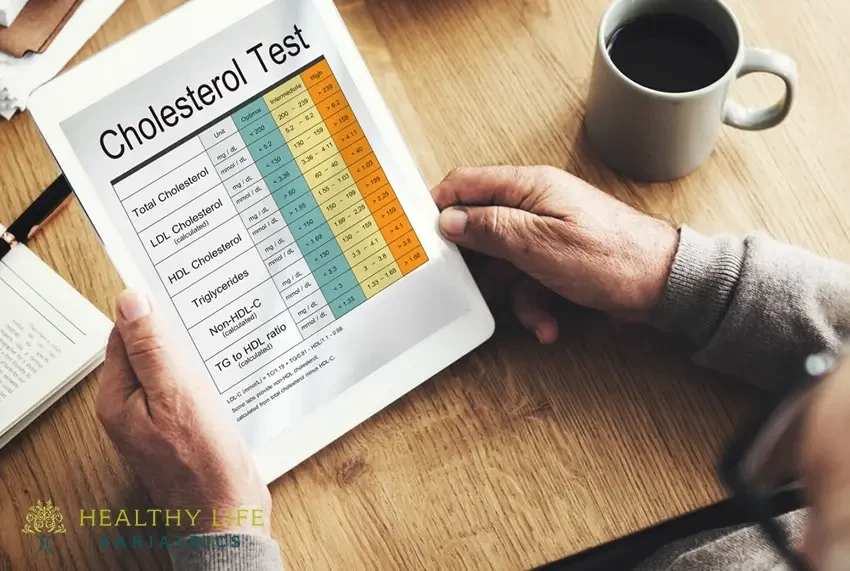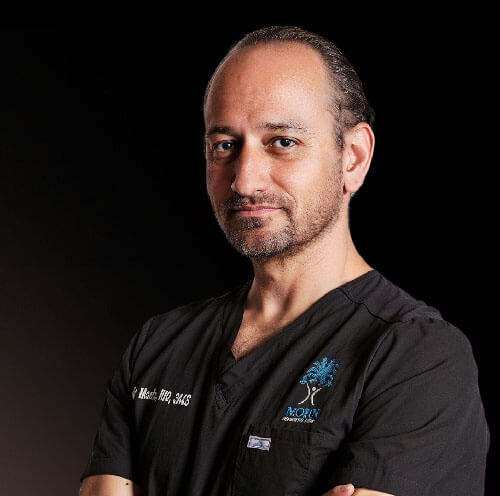Introduction: Bariatric Surgery for High Cholesterol
In the realm of cardiovascular health, the pursuit of effective interventions for managing high cholesterol has led researchers and healthcare professionals to explore various avenues. High cholesterol is a common condition that can lead to serious health complications if left untreated. While medication and lifestyle changes have traditionally been primary approaches, surgical interventions are increasingly gaining attention. This blog aims to delve into the nuanced world of surgery for high cholesterol, shedding light on its mechanisms, efficacy, and considerations.
How Cholesterol Causes Problems
Cholesterol is a waxy, fat-like substance found in all of our body's cells. We get cholesterol from two sources: our body naturally produces it, and we also consume it in animal-based foods. At normal levels, cholesterol is important for many bodily functions. However, when cholesterol levels in the blood become too high, this condition known as hypercholesterolemia can lead to atherosclerosis.
Atherosclerosis occurs when cholesterol plaque accumulates inside the walls of the arteries. This buildup causes the arteries to harden and narrow, reducing blood flow. The restricted blood flow can lead to complications like heart attack or stroke. According to the Centers for Disease Control and Prevention (CDC), high cholesterol affects about 12% of adults over the age of 20 in the United States.
Understanding the Surge in Surgical Approaches

The Paradigm Shift in Cholesterol Management
Over the years, the landscape of high cholesterol management has undergone a significant shift. The conventional reliance on pharmaceuticals and lifestyle modifications has paved the way for surgical alternatives. This shift is not only a response to treatment-resistant cases but also an acknowledgment of the intricate interplay of factors contributing to elevated cholesterol levels.
Medication Treatment
For most patients, the first line of treatment for high cholesterol is lifestyle changes such as heart-healthy eating, exercise, and weight loss. If lipid levels remain high after implementing lifestyle changes, cholesterol-lowering medications called statins are usually prescribed. Statins work by reducing the liver’s production of cholesterol.
Research shows that statin medications are highly effective for lowering LDL “bad” cholesterol and triglyceride levels while raising HDL “good” cholesterol. A large meta-analysis found that statins significantly reduce cardiovascular events and mortality. However, around 10-20% of patients have an inadequate response to statin therapy or are unable to tolerate the medications. In these cases, surgical options may be considered.
Surgery for Familial Hypercholesterolemia
One subset of patients that may especially benefit from cholesterol-lowering surgery is those with an inherited genetic disorder called familial hypercholesterolemia (FH). FH is characterized by very high LDL cholesterol levels beginning at birth along with a family history of premature cardiovascular disease.
Studies show that patients with FH have a 13 times higher risk for coronary artery disease. The two surgical procedures specifically used to treat FH are:
LDL Apheresis
LDL apheresis is a procedure that filters LDL cholesterol out of the bloodstream in a process similar to kidney dialysis. During a session lasting several hours, the patient’s blood is removed and processed through a special filtering machine to extract LDL particles before being returned to the body.
According to the FH Foundation, LDL apheresis can remove 60-70% of LDL cholesterol from the bloodstream. However, the effects are temporary, so the procedure needs to be repeated every 1-2 weeks.
PCSK9 Inhibitors
PCSK9 is a protein that impairs the liver’s ability to remove LDL cholesterol from the blood. Injectable PCSK9 inhibitor medications block PCSK9 to boost LDL clearance. However, these medications may cause side effects and are extremely expensive.
As an alternative, PCSK9 genes can be directly inhibited by using RNA interference (RNAi) technology during a surgical procedure. This involves intravenously administering a PCSK9 RNAi molecule attached to a lipid nanoparticle that specifically targets PCSK9 genes in the liver cells.
Clinical trials have found that PCSK9 RNAi medications and surgical treatments can lower LDL cholesterol by up to 60% with few side effects. But like LDL apheresis, the effects diminish over time so repeat treatments are required.
Unraveling the Surgical Options

-
Bariatric Surgery and Lipid Metabolism
Recent studies have explored the impact of bariatric surgery on lipid metabolism. Bariatric procedures, initially designed for weight management, have shown promising results in cholesterol reduction. Understanding the intricate relationship between obesity and high cholesterol opens avenues for a holistic approach to cardiovascular health.
Beyond specialized techniques for familial hypercholesterolemia, bariatric weight loss surgeries are sometimes used with the goal of reducing lipid levels in obese patients. Types of bariatric surgeries include:
- Roux-en-Y gastric bypass: This surgery reroutes the digestive system to restrict food intake and absorption.
- Sleeve gastrectomy: Removes part of the stomach to induce portion control and hormonal changes for decreased hunger.
- Biliopancreatic diversion: Significant portion of the stomach is removed along with rerouting intestines for malabsorption of calories.
Multiple studies show bariatric surgeries successfully lower BMI and improve the overall lipid profile, including total cholesterol, LDL cholesterol, and triglycerides. The effects appear to be mediated both by weight loss as well as metabolic changes that favorably alter lipid regulation.
However, bariatric surgery is associated with short and long-term complications. It’s generally only recommended for individuals with extreme obesity that have been unable to lose weight through other means. The American Society for Metabolic and Bariatric Surgery states bariatric surgery should be considered for patients with BMI ≥40 or those with BMI ≥35 who also have obesity-related conditions like hypercholesterolemia.
-
Intrigues of Lipoprotein Apheresis
Lipoprotein apheresis, a procedure reminiscent of dialysis, involves the extracorporeal removal of lipoproteins from the blood. This targeted approach holds potential for individuals with severely elevated cholesterol levels, offering a means to rapidly reduce circulating lipids. Examining the procedural intricacies and outcomes is crucial for assessing its viability.
-
Emerging Frontiers: Gene Therapy
As medical science advances, the prospect of gene therapy for high cholesterol emerges. Gene-editing technologies promise to address the root causes of elevated cholesterol by targeting genetic factors. While in the nascent stages, exploring the potential and ethical considerations of this futuristic approach is imperative.
The Future of Cholesterol Surgery
Surgical approaches to directly lowering cholesterol are currently limited to specialized circumstances like familial hypercholesterolemia or morbid obesity. They are invasive, expensive, and not appropriate for most patients. However, research is underway to develop minimally invasive cholesterol-lowering procedures suitable for wider use.
One promising example is a catheter-based hepatic vein isolation technique using balloons and alcohol injection to block cholesterol production. Though still experimental, initial studies found over 50% reductions in LDL cholesterol. If proven safe and effective, new surgeries like this could eventually provide another option for patients who need dramatic cholesterol reduction.
Navigating the Efficacy Landscape

-
Quantifying Success: Surgical Outcomes
Understanding the effectiveness of surgical interventions is pivotal. Exploring success rates, long-term outcomes, and potential complications provides a comprehensive view of the efficacy landscape. This nuanced evaluation is crucial for both healthcare professionals and individuals considering surgical options.
-
Patient Selection and Tailored Approaches
Surgical interventions are not one-size-fits-all solutions. Delving into the importance of patient selection and the need for personalized approaches is essential. Examining factors such as age, overall health, and genetic predispositions helps in optimizing the decision-making process for both physicians and patients.
Navigating Challenges and Ethical Considerations
-
Balancing Risks and Benefits
Every medical intervention comes with inherent risks. Balancing the potential benefits of surgical approaches with the associated risks is a critical aspect of informed decision-making. This section explores the risk-benefit paradigm and how it applies to surgical interventions for high cholesterol.
-
Ethical Dimensions of Gene Therapy
The prospect of gene therapy introduces ethical considerations. Analyzing the ethical dimensions, including consent, equity in access, and long-term consequences, is imperative. Navigating these ethical waters is crucial for the responsible development and application of gene-editing technologies.
External Perspectives and Further Reading
As we traverse the multifaceted landscape of surgical interventions for high cholesterol, it's essential to consult diverse perspectives. Here are some external resources for a more in-depth understanding:
Conclusion: Bariatric Surgery for High Cholesterol
In summary, surgical treatment for high cholesterol is currently limited but may expand in the future. From bariatric procedures to gene therapy, the options are diverse and evolving. Navigating this landscape requires a nuanced understanding of efficacy, patient considerations, and ethical dimensions.
As research continues to unfold, the integration of surgical approaches into the broader spectrum of high cholesterol management holds the promise of more tailored and effective solutions. For now, surgery is primarily considered for genetic hypercholesterolemia or as part of weight loss management in obesity.
While procedures like LDL apheresis, RNAi, and bariatric surgery can effectively lower lipid levels, they also carry significant risks. Most patients are better served by lifestyle interventions and cholesterol-lowering medications before considering surgical approaches.

